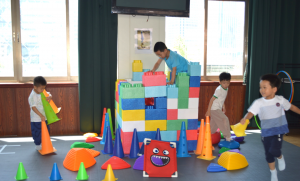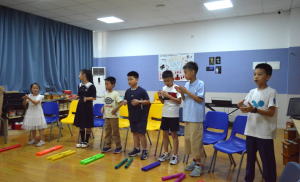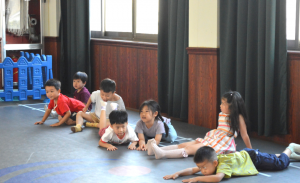夏日的阳光洒满营地,这里没有沉闷的课堂,只有此起彼伏的好奇提问和热火朝天的探索身影。我们的IB主题夏令营,为孩子们打开了一扇用探究和概念理解世界的大门,让他们成为了真正的小小思想家和行动派。
The summer sun bathed the camp. Here, there were no dull classes,only the continuous curious questions and the enthusiastic exploration figures. Our IB-themed summer camp opens a door for children to understand the world through exploration and concepts, enabling them to become true little thinkers and doers.
昆虫王国大发现
Insect Kingdom’s Great Discovery
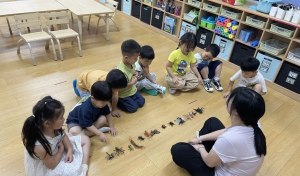
幼儿班的孩子们像真正的科学家一样,专注地观察着甲虫闪亮坚硬的外壳,蝴蝶翅膀上不可思议的对称花纹,数着蜘蛛有几条腿。他们轻轻触摸逼真的昆虫模型,感受着不同“铠甲”的质感。生动的绘本、有趣的儿歌和角色扮演游戏,让孩子们化身为忙碌的小蜜蜂去“采蜜”,或是学蚯蚓在“泥土”里蠕动,在欢乐的互动中理解昆虫如何移动、觅食和交流。
The children in the kindergarten class were like real scientists, intently observing the shiny and hard shells of beetles, the incredible symmetrical patterns on the wings of butterflies, and counting how many legs spiders had. They gently touched the realistic insect models, experiencing the texture of different “armors”. Vivid picture books、interesting children’s songs and role-playing games allow children to transform into busy little bees to “gather nectar”, or learn earthworms to wriggle in the “soil”. Through joyful interactions, they understand how insects move, forage and communicate.
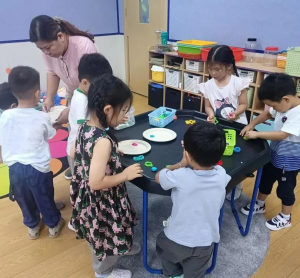
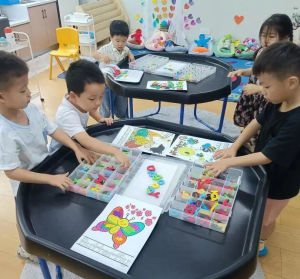
“为什么瓢虫身上有斑点?”“蝴蝶的翅膀这么漂亮有什么用?”老师们引导着充满童真的讨论,帮助孩子们初步理解这些特征与昆虫生存、保护自己的简单联系。孩子们运用黏土、画笔等材料,发挥想象力,动手制作自己心目中的“昆虫”或绘制一幅“昆虫”图。
“Why do ladybugs have spots on their bodies?” “What’s the use of a butterfly’s wings being so beautiful?” The teachers guided the innocent discussions, helping the children initially understand the simple connection between these characteristics and the survival and self-protection of insects. Children use materials such as clay and brushes, exert their imagination, and make the “insects” in their minds or draw a picture of an “insect” by themselves.
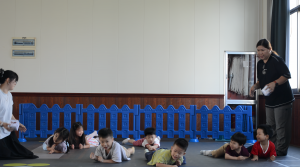
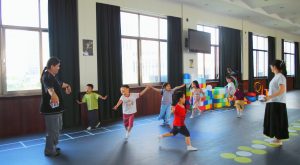
无垠宇宙中航行
Voyage through the Vast Universe
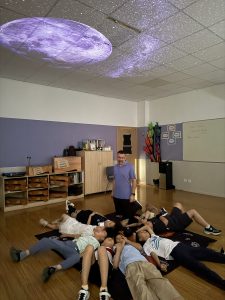
小学班的教室则化身为 “行星研究所”。“未来宇航员”们的星际远征,始于对头顶星空的无限好奇:“为什么月亮会变脸?”“火星上真的能找到水吗?”“如果地球‘生病’了,人类能去哪里?”带着这些宏大的问题,“探索家”们首先动手构建宇宙的模型。他们用不同大小的球体,亲手制作“太阳系八大行星模型”,在转动中直观演示昼夜更替、四季轮回和月亮的阴晴圆缺。
The classroom of the primary school class was transformed into a “Planetary Research Institute”. The interstellar expeditions of the “future astronauts” began with their boundless curiosity about the starry sky above: “Why does the moon change its face?” Can water really be found on Mars? “If the Earth were ‘sick’, where could humanity go?” ” With these grand questions in mind, the “explorers” first set about building models of the universe. They made “models of the eight planets in the solar system” by hand with spheres of different sizes, and visually demonstrated the alternation of day and night, the cycle of the four seasons and the waxing and waning of the moon while rotating them.
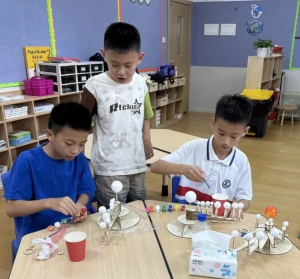
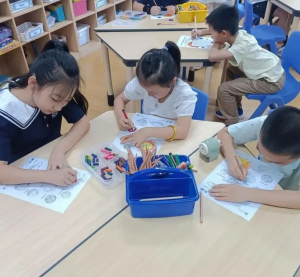
孩子们面前铺开了一张张清晰的太阳系八大行星线稿图。老师提供了行星的真实图片作为参考。孩子们仔细地观察着:火星是独特的锈红色,木星表面有标志性的大红斑条纹,地球是美丽的蔚蓝色……他们一边对照着图片,一边认真地挑选着合适的彩笔或颜料。涂色的过程,就是加深印象的过程。在涂绘土星时,会记住它那美丽的光环;在描绘蓝色的海王星时,会好奇它为何如此寒冷。涂完一颗,再涂下一颗,太阳系家族的成员们逐渐在画纸上鲜活起来。
Before the children lay out clear line drawings of the eight planets in the solar system one after another. The teacher provided real pictures of the planets as references. The children observed carefully: Mars was a distinctive rust-red color, Jupiter had the iconic stripes of the Great Red Spot on its surface, and the Earth was a beautiful azure… While referring to the pictures, they carefully selected the appropriate colored pens or paints. The process of coloring is the process of deepening the impression. When painting Saturn, one will remember its beautiful rings. When depicting the blue Neptune, one may wonder why it is so cold. After painting one and then another, the members of the solar system family gradually came alive on the drawing paper.
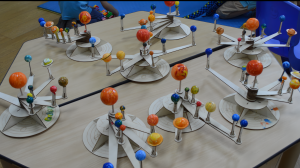
在“昆虫微观世界”的细致观察与“宇宙奥秘空间”的严谨探索中,孩子们运用IB赋予的科学方法——好奇的双眼、探究的双手、分析的头脑和负责的行动——丈量了生命形式的多样与宇宙运行的规律。他们不仅认识了昆虫的特征或行星的知识,更在构建科学观察和理性分析的思维框架,锻炼了信息处理和表达的能力,并萌发出对生命多样性、地球唯一性的深切珍视与守护责任。当小观察家们用心理解并关爱着微观生命,当探索者们用科学认知守护着人类共同的家园,我们看到了探究的力量如何在不同的尺度上生根发芽,结出同样丰硕的成长果实。
In the meticulous observation of the “microscopic world of Insects” and the rigorous exploration of the “mysterious space of the universe”, children used the scientific methods endowed by IB – curious eyes, inquisitive hands, analytical minds and responsible actions – to measure the diversity of life forms and the laws of the universe’s operation. Not only did they come to know the characteristics of insects or the knowledge of planets, but they were also building a thinking framework for scientific observation and rational analysis, exercising their abilities in information processing and expression, and developing a deep sense of cherishing and protecting the diversity of life and the uniqueness of the Earth. When young observers understand and care for microscopic life with their hearts, and when explorers protect the common home of mankind with scientific cognition, we have witnessed how the power of inquiry takes root and sprouts at different scales, bearing equally rich fruits of growth.
